Memories of our childhood: Toys of the 1940's by @mevilkingdom
Hi Steemians! As someone who is into collecting toys AND history I tought: Why not combine both? So I started a series in which I will talk about the history of toys. This time: 1940-1949!

Mechanical engineer Richard James invented the Slinky by accident. In 1943, he was working to devise springs that could keep sensitive ship equipment steady at sea. After accidentally knocking some samples off a shelf, he watched in amazement as they gracefully “walked” down instead of falling. Along with his wife Betty, James developed a plan to turn his invention into the next big novelty toy. Betty combed the dictionary for an appropriate name and came up with “Slinky.” James designed a machine to coil 80-feet of wire into a two-inch spiral. The couple borrowed $500 to manufacture the first Slinkys. Initial sales proved sluggish but soared after Gimbels Department Store in Philadelphia allowed demonstrations for Christmas 1945. The first 400 Slinkys sold within minutes. An advertisement with a memorable jingle familiarized a national customer base. “What walks down stairs alone or in pairs and makes a slinkety sound? A spring, a spring, a marvelous thing. Everyone knows it's Slinky!” Slinkys glided effortlessly down stairs on television, but alas most household steps proved too tall and wide for long descents. Still, at the end of the 20th century and 250 million Slinkys later, people continued to buy them.
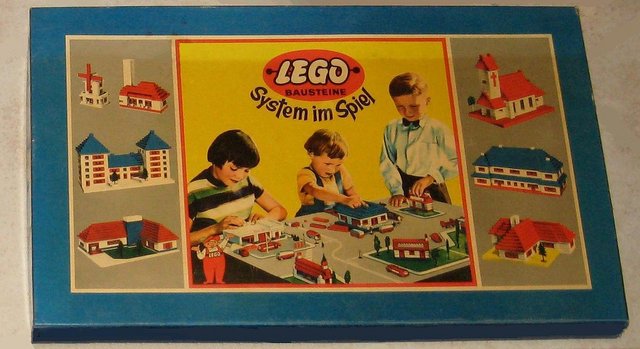
The Lego Group began in the workshop of Ole Kirk Christiansen (1891–1958), a carpenter from Billund, Denmark, who began making wooden toys in 1932. In 1934, his company came to be called "Lego", derived from the Danish phrase "leg godt", which means "play well". In 1947, Lego expanded to begin producing plastic toys. In 1949 Lego began producing, among other new products, an early version of the now familiar interlocking bricks, calling them "Automatic Binding Bricks". These bricks were based in part on the Kiddicraft Self-Locking Bricks, which were patented in the United Kingdom in 1939 and released in 1947. Lego modified the design of the Kiddicraft brick after examining a sample that they received from the supplier of an injection-molding machine that Lego purchased. The bricks, originally manufactured from cellulose acetate, were a development of the traditional stackable wooden blocks of the time.
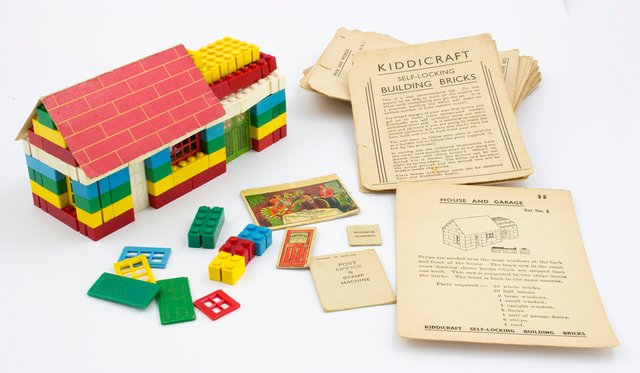
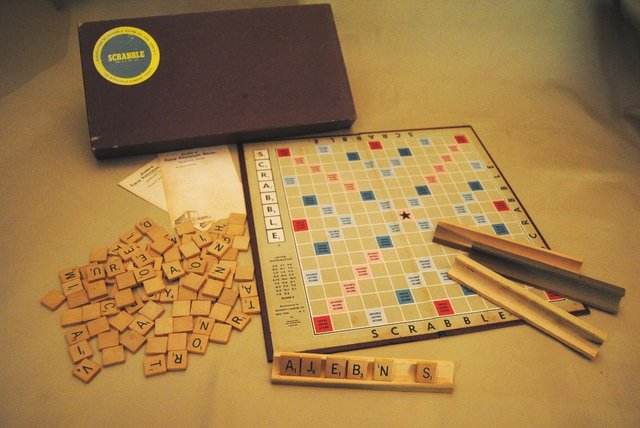
In 1931 Alfred Butts translated his lifelong love of crossword puzzles into a board game. Mr. Butts, attempting to create a game that would use both chance and skill, combined features of anagrams and the crossword puzzle-and called his new game "Criss Cross Words."
The game was strictly a home entertainment for his family and friends. The established game manufacturers to whom he submitted his invention were unanimous in rejecting it for commercial development. Mr. Butts, again busy as an architect, put aside his efforts to develop the game.
In 1948, Mr. and Mrs. James Brunot, owners of one of the original Criss Cross Words sets, thought the game should be marketed. Brunot had made one or two changes to the game, including the rule about starting across the middle instead of in the top left corner, and, perhaps more inspirationally, changing the name to Scrabble
Mr. Butts authorized the Brunots to manufacture the game under a new arrangement between the two, Brunot would manufacture and market the newly named game through his business facility, the Production and Marketing Company. The first four years were a struggle. Mr. Brunot kept his regular job. In 1949, the Brunots made 2,400 sets and lost $450. However, year by year, the orders increased as news about the game spread, mainly by word of mouth. Then, in 1952, the Brunots left for a trip to Kentucky, returning to find their little factory deluged with orders. Obviously, the game was no fad.
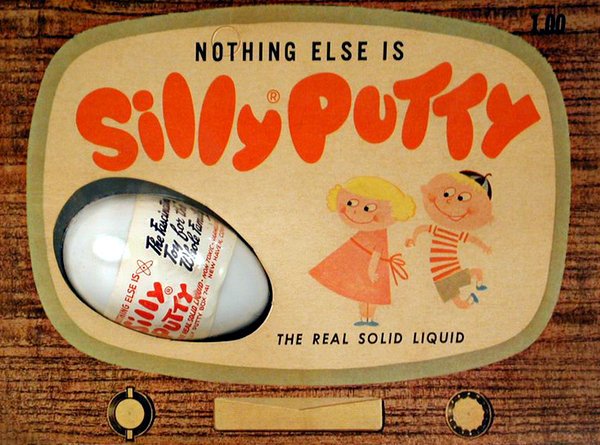
Credit for the invention of Silly Putty is disputed and has been attributed variously to Earl Warrick and James Wright. Throughout his life, Warrick insisted that he and his colleague, Rob Roy McGregor, received the patent for Silly Putty before Wright did; but Crayola's history of Silly Putty states that Wright first invented it in 1943. Both researchers independently discovered that reacting boric acid with silicone oil would produce a gooey, bouncy material with several unique properties. The non-toxic putty would bounce when dropped, could stretch farther than regular rubber, would not go moldy, and had a very high melting temperature.
In 1949 toy store owner Ruth Fallgatter came across the putty. She contacted marketing consultant Peter C.L. Hodgson. The two decided to market the bouncing putty by selling it in a clear case. Although it sold well, Fallgatter did not pursue it further. However, Hodgson saw its potential.
Already US$12,000 in debt, Hodgson borrowed US$147 to buy a batch of the putty to pack 1 oz (28 g) portions into plastic eggs for US$1, calling it Silly Putty. Initially sales were poor, but after a New Yorker article mentioned it, Hodgson sold over 250,000 eggs of silly putty in three days.
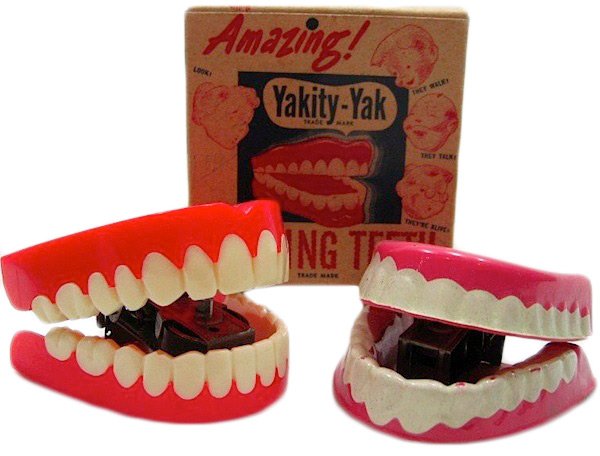
In the 1940s, toy inventor Eddie Goldfarb saw an ad for a false-teeth holder called a “Tooth Garage” and he started cracking up. In his head, he saw a pair of dentures, chomping and sputtering down the road like a car, and parking on their own.
Thus, in 1949, Yakity-Yak Talking Teeth—the wildly popular wind-up gag commonly known as “chattering teeth”—were born. Goldfarb took his invention to toy kingpin Marvin Glass, who showed it to his buddy, Irving Fishlove, of Chicago’s famed novelty concern, H. Fishlove & Co. That sort of ridiculous and obvious slapstick humor is exactly the sort of thing Fishlove, lived for.
H. Fishlove still produces chattery teeth based on Goldfarb's specifications.
Thank you very much for reading and don't forget to follow me for more updates! Next time: 1950-1959!
I do not own any of the pictures used in this article.
Who is Mande Walschot?
Mande Walschot resides in Belgium and currently owns over 1,360 boxed My Little Ponies, around 500 boxed dolls, over 70 polly pockets, 40 plush care bears, 30 Tsum Tsums, about 3,000 Pokémon cards, around 200 comic books and lots of stuffed toys! Gemr spotlight collection
Also seen on national television and newspapers.
The slinky has very little intrinsic value until demonstrated.
If television had not come along about the same time, it would never have gotten anywhere.
Same with Post-it notes. Everyone at 3M loved them, but when they marketed them outside the company they were a complete flop. Until marketing started running adverts to show how you could use them.
This series is so interesting, I love reading the history behind these toys!
Thank you! glad you like it
Love it !! 😀